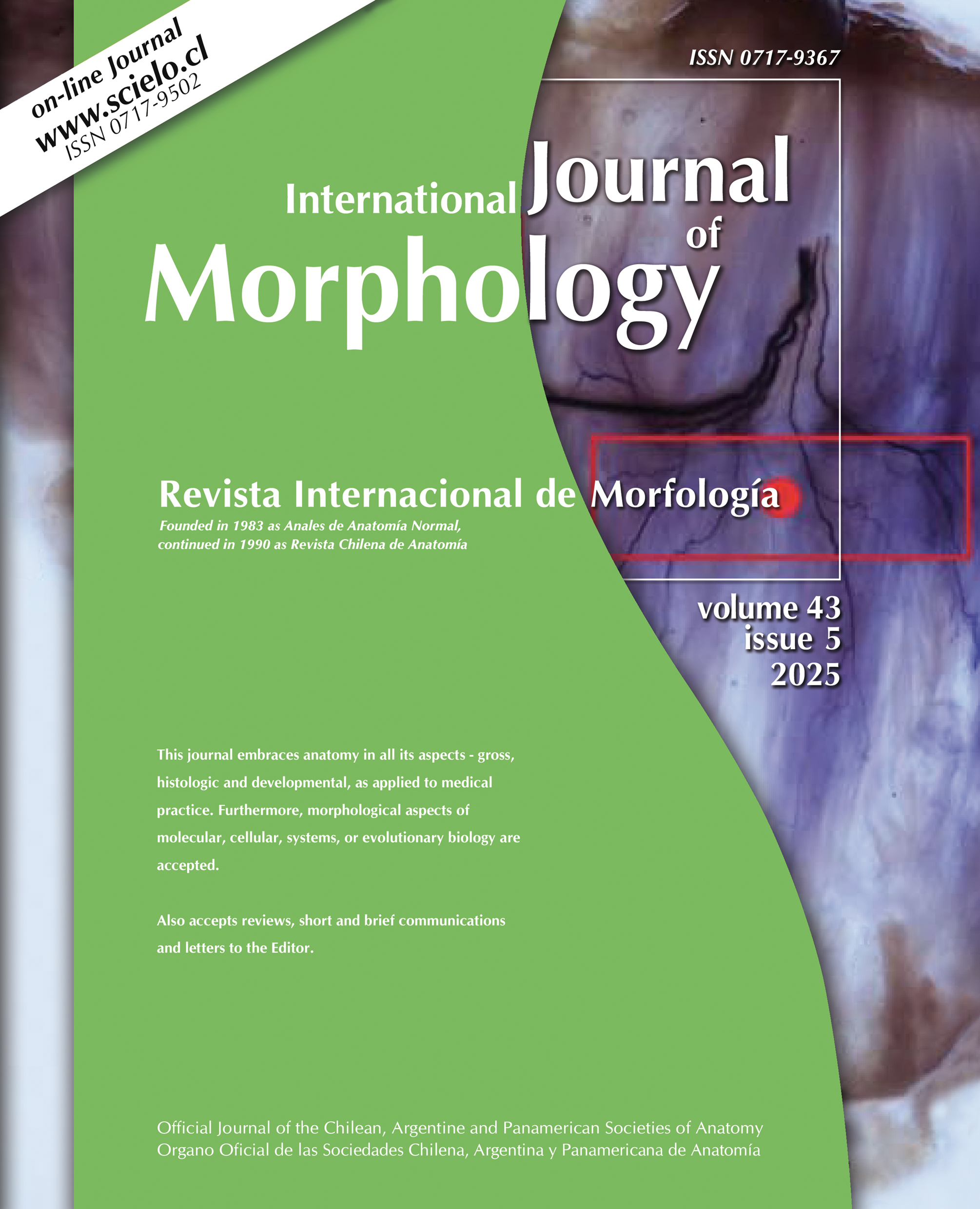Dimensional Study of Midsagital Craneometric Points in Skulls of Chilean Population
DOI :
Alejandro Carreño & Pablo Henny
Summary
The usefulness of craniometric landmarks in neurosurgical practice lies in the documented relationship they have with the underlying encephalic and vascular structures, being relevant when planning and performing surgical approaches and thus reducing their associated morbidity. In spite of this, there are no published data on the distances of these craniometric points in the Chilean population. Forty-five dry adult skulls were used. Measurements of the superficial distances between midsagittal craniometric points were made. The average superficial distance between nasion and bregma was 12.71 cm; between bregma and lambda, 12.34 cm; between lambda and inion, 6.64 cm; between inion and opisthocranium, 5.16 cm; between lambda and opisthocranium, 3.88 cm and between inion and opisthion, 5.16 cm. Statistically significant differences (p<0.05) were found between the group studied with data obtained from the literature in the nasion-bregma, bregma-lambda, and lambda-opisthocranium distances. The distances between the different craniometric points in Chilean skulls were characterized in the present study, with some differences between the data in the literature that must be understood in the context of the related surgical practice.
KEY WORDS: Skull; Craniometry; Cephalometry.
How to cite this article
CARREÑO, A. & HENNY, P. Dimensional study of midsagital craneometric points in skulls of Chilean population. Int. J. Morphol., 40(5):1242-1246, 2022.





























